3D Medical Animation still shot of structure and cross-sectional view of Human Coronavirus © Wikicommons
What exactly is a virus? One answer could be “a bloody nuisance”. But is it even a living organism? There’s some disagreement over that, although the general consensus is ‘no’, at least in most cases. “They are problematic as they have many characteristics of the more definably living cells,” wrote Adam Rutherford in a footnote to the introduction of his book, The Future of Life, “but lack the cellular machinery to reproduce themselves. Thus they are parasitic on living cells in order to reproduce.” I should really explain that Rutherford’s book is really two books in a single cover: The Origin of Life and The Future of Life, both parts packed with accessible information and very interesting. Rutherford opts for the ‘not alive’ side of the argument, with certain provisos. But if a virus isn’t really alive and cannot reproduce without help, how come the SARS-CoV-2 virus is causing worldwide death and destruction whilst simultaneously wrecking the global economy? In a way you have to admire something so small that can, despite its tiny dimensions, have such a colossal impact.

The virus in question measures between 60 and 140 nanometres in size. That’s around one thousandth the width of a human hair. Your fingernails grow at the rate of one nanometre per second. The SARS part of this particular virus’s name comes from ‘severe acute respiratory syndrome’ and its shape defines it as a corona virus – basically globular with things sticking out of it (early photographs only showed a segment of the outer coat which, with the spikes sticking out, looked a little like a child’s drawing of a crown) – hence ‘CoV’, while the fact that it’s the second type to have appeared adds the ‘2’ to its official title. The diminutive dimensions mean that a single respiratory droplet of less than ten micrometres (10M), ejected in a sneeze, a cough or even transferred to a surface by a hand that had touched a mouth or nose, can contain thousands and thousands of virus particles. One is enough. Basically, the virus is a round blob of protein held inside a fatty membrane from which protrude spikes of a different type of protein. Inside it is a strand of RNA – ribonucleic acid – containing its genome: the instructions for making copies of itself. This spike of “S” protein can grab hold of what’s known as the ACE2 receptor on a human cell, allowing the structural “N”, “M” and “E” proteins it contains to enter the cell and highjack its machinery to construct the other proteins the virus needs in order to reproduce. It’s very good at it, as its growing list of victims around the world clearly demonstrates.
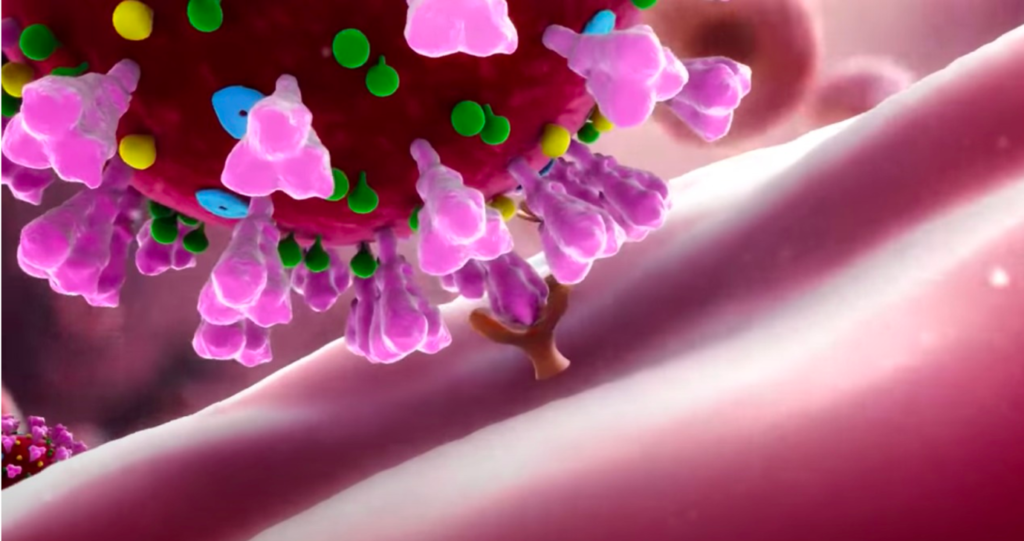
The RNA strand of the SARS-CoV-2 virus is unusually long, with some 29,900 bases, which is close to the limit. By comparison, the Ebola virus has around 19,000, the influenza virus has around 13,500 bases, while the virus for the common cold can boast a measly 8,000. That massive SARS-CoV-2 RNA strand (massive in comparison with others, that is, and still contained inside the lipid envelope) is the virus’s strength but also its possible weak spot. With so many bases to copy, there is a potential for errors, leading to mutations that can spread the disease more quickly or kill it off completely. So far there have not been many mutations; the virus has shown itself to be an unusually accurate proof-reader, thanks to an enzyme called exonuclease, that is able to correct any mistakes. But it also provides an opportunity for a vaccine to disrupt its construction process, although it seems that the long RNA genome contains “accessory” genes that may help it to avoid the human immune system. For scientists working to defeat the thing, finding how to achieve that has been a challenge to which they have risen with commendable speed.
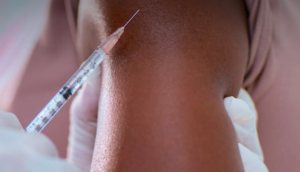
There are various ways in which vaccines can work. Some use disabled fragments of the original virus to spur the immune system into vigorous action. Some map the genes from the virus and insert them into a safe virus of some sort which is then injected. Ribosomes in the host cell then make virus pieces which are presented to the T cells, thus setting off an immune response. The various vaccines currently being used around the world employ a variety of tactics, but those mysterious “accessory” genes seem to be making it harder to achieve immunity. What’s more, sometimes the immune system overreacts, which is extremely dangerous. Part of its job is to kill off infected lung cells, but the dead ones can then create a lot of mucus-like waste that clogs up the lung, making it necessary for the victim to be put on a ventilator to save them from suffocation. It is a race against time.
RACING AN UNKNOWN COMPETITOR
“Every day counts if you are trying to stop an infectious disease of unknown origin,” said Helen Clark in an interview with the South China Morning Post. “There just doesn’t seem to be enough happening quickly enough, from the time of first awareness of the cluster onwards, and here we are.” Clark, a former prime minister of New Zealand and one-time head of the United Nations Development Programme, is co-leader of an international panel investigating the pandemic.
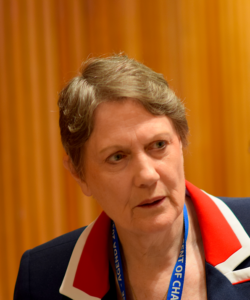
“The WHO didn’t have all the information it needed, and – let’s be fair here, we are still discovering things about Covid-19 every day, we are on a very steep learning curve – but all the more reason, I would think, for applying a precautionary principle. If it smells bad, it may well be bad,” she told the newspaper.
So, a race against time? It seems more like the three-legged egg-and-spoon race for grumpy parents at a nursery school sports day in the rain, with everyone tripping over their own and other people’s shoelaces, bumping into each other and ending up with egg all over their faces. Take the nonsensical (and uncharacteristic) confusion into which the normally ice-cool Ursula von der Leyen has led the European Commission over which she presides. Cracks have appeared in the relationship among the 27 countries that make up the European Union as coronavirus has stoked fears and a competitiveness over vaccination. They argued over which vaccines were needed and at what cost while Britain, disregarding its former partners, raced ahead, leading von der Leyen to become secretive about what the Commission was doing, allegedly avoiding the European Parliament and unwilling to reveal what contracts it had signed with pharmaceutical companies and “resisting the publication of the contracts and refusing to lift intellectual property rights to ramp up production,” according to The Left group of MEPs, who called the situation “a fiasco”. It was a classic ‘panic’ response. Von der Leyen had agreed to meet privately with some political groups but not others, leading The Left’s Co-President, Manon Aubry to say: “It is unacceptable that the Commission is hiding from EU citizens instead of assuming real leadership.”


Aubry said that at a time of such widespread suffering, the Commission and its president should be seen to be in the driving seat. “The crisis in the EU is growing,” said The Left’s Co-President, Martin Schirdewan, “with families struggling to make ends meet and businesses closing down, yet the Commission continues to adopt a passive approach and refusing accountability of any sort.” The Left have accused von der Leyen’s Commission of handing control of the Covid-19 response to the pharmaceutical companies themselves by refusing to declare the vaccines “a public good”. The Left argue that at a time like this the Commission should waive Intellectual Property Rights and scale up production through compulsory licences.
Von der Leyen also came under attack in the UK when she threatened to break the so-called Northern Ireland protocol, which would have closed the border between the north (the part that is in the UK) and the south (which is the independent Irish Republic).
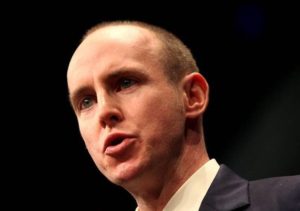
“Europhiles have finally had their eyes opened to the hideous reality of the EU,” gloated former Conservative MEP and Europhobe Dan Hannan, writing in the Eurosceptic newspaper, the Sunday Telegraph. One should recall, however, that when he was an MEP he spent much of his time with the officially anti-EU MEPs of Nigel Farage’s UKIP party. Furthermore, he was proud of having given a speech in the US in support of the governor of Alaska, Sarah Palin, in which he warned American voters that unless they voted for her they could end up with a National Health Service, like Britain’s. Yep, that’s what he said: only Palin could save you from getting an NHS, when everyone knows medical treatment should be paid for, with the richest getting the best, of course. So UK voters should remember that his opposition to the EU over COVID-19 conceals an opposition to any sort of free health care; health should be doled out in accordance with one’s wealth. He made it clear in his speech that he believed in a free market for health, but not in free healthcare. Of course, though, he could not resist an open anti-EU goal when presented to him so egregiously by von der Leyen. Who could blame him? Readers of the Sunday Telegraph might turn a blind eye to some of Hannan’s other policies as long as he’s attacking the old bogeyman of Brussels. But that doesn’t make Hannan a candidate for ‘Good Samaritan of the Year’ where public health is concerned.
Even so, the EU has been lamentably slow in its bid to vaccinate the vulnerable: only 3% of EU citizens had had the jab at the time of writing compared with 14% in the UK. This has drawn envious sniping from some EU politicians over Britain’s hasty (some might say reckless) rush into a vaccination programme with a relatively lightly-tested vaccine. The latest sniffy criticism had just come from France’s Europe Minister, Clément Beaune, saying EU citizens had “nothing to envy” in Britain’s response.
Partly because of the speed of research and development, together with the disunited nature of our world politically, a lot of pharmaceutical companies are rushing to get a product to market, but they cannot bypass their legal requirements. According to the World Health Organisation (WHO) there are around fifty different vaccines under development around the world, apart from those already in use.
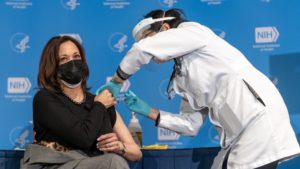

This scattergun approach is necessary because the virus itself mutates and is constantly changing, despite its excellent proofreading and error-correcting mechanism. “What we’re seeing is similar mutations arising in multiple places,” Adam Lauring, a virologist at the University of Michigan, told Scientific American. “That’s pretty suggestive that these mutations are doing something.” Specifically, they appear to help the virus transmit more readily and evade the immune system. The vaccines produced by Moderna and Pfizer BioNTech still seem to work effectively against SARS-CoV-2, some other types rather less so. I certainly hope the Pfizer BioNTech version works – it’s the type I was given a few days ago.

Apart from a mild tenderness in my left arm and a feeling of tiredness for a day afterwards, it has had no ill effects, nor do I expect any. As long as it keeps SARS-CoV-2 at bay, I shall be content, but I show no signs so far of becoming one of the “millions” some conspiracy theorists believe the vaccines will kill.
WHAT’S YOUR POISON?
The Spanish variant of the disease involves the A222V mutation, which hampers the ability of antibodies to attack the virus’s famous spike protein, the little spiky things that protrude from the virus and which are what latches onto our ACE2 receptor cells. The UK version of the virus, known as B.1.1.7, which the British government has warned is ‘more contagious’, contains some seventeen mutations – that’s a lot, considering how proficient the virus has proved at putting right any errors that occur. Whether or not it is more contagious is still up for debate but it certainly seems to kill more of those it infects. The B.1.351 version is the South African type, which originated far from the UK but at the same time and contains the same mutations, plus a couple of even nastier additions: E484K and K417N which help the spike protein fend off our bodies’ attempts to disable it through our immune systems, and it does this even more potently than other types. Just to add to its unthinking malevolence, the South African type is even harder to spot. The UK variant can be identified through a polymerase chain reaction (PCR) test, while the South African type requires full genetic sequencing and can be missed even then.

A Duke University Health Systems a staff administers a COVID-19 test at a US drive-up testing site © Duke
There is another new variant that has cropped up in Brazil, although it has also been noted in Japan, according to Scientific American, which explains that minor random mutations have been happening ever since SARS-CoV-2 made the jump from animals to humans. They are certainly keeping research scientists busy and politicians terrified, either for the health of their citizenry or for their chances of re-election.
But while researchers run themselves ragged in the hunt for a vaccine that works against every variant, and politicians try to save their own careers, conspiracy theorists have been having a field day. Former US President Donald Trump, for instance, reckoned that a rise in reported cases was merely the result of increased testing. He repeated the allegation in television interviews. It’s the equivalent of a lazy householder blaming his home’s lack of cleanliness on his visitor’s new glasses; if you can’t see it, it isn’t there. Then there was the claim that if we sat back and just let the virus spread, we would eventually develop what’s called ‘herd immunity’. The reason this is a bad idea is that the disease would have to infect up to 70% of the community for that to work, and given its tendency to cause widespread mortality, you’d be left with a largely deserted country and some of the world’s richest morticians. Additionally, some people (Trump being one of them yet again) dismissed COVID-19 as being ‘little worse than ‘flu’. Indeed, Trump claimed that only 6% of the reported deaths were from COVID-19, effectively repeating some nonsense that originated with the debunked conspiracy theorist site, QAnon. I’m sure some people still cling to this nonsense, at least until they get COVID-19.
Such a claim would have had little impact on the population just after World War I when the so-called Spanish ‘flu killed some 50-million people. Researchers say the SARS-CoV-2 virus is much more deadly, probably by a factor of five or even ten. There are still people who believe face masks are unnecessary, with some state leaders in the US actually banning the imposition of a requirement to wear masks on their employees. There are movements of people opposed to masks, maintaining that they are an infringement of liberty. They’re an infringement on the freedom to willingly catch a virus you don’t believe exists and to have the death of your choice rather earlier than you had planned.
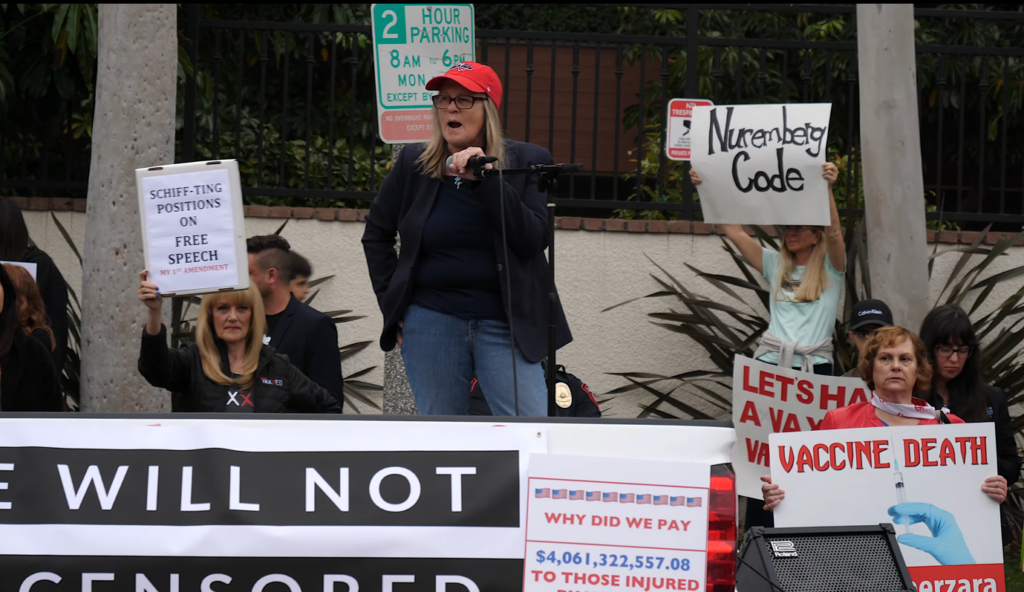
Once more, of course, we have the anti-vaxxers, opposed to any sort of vaccination and willing to bet the lives of their loved ones on some unqualified Internet guru being more right than all those research scientists and doctors. Even more ridiculous is the claim that it’s all a plot to let Bill Gates insert tracker devices in us all, hidden somehow inside the vaccine. What in the name of every loony who ever lived would he do with that information, even if he had it? And, of course, there’s the discredited research scientist Doctor Judy Mikovits who claims that deaths were not caused by the virus but by a reaction to wearing face masks leading to sufferers breathing in (one assumes they also had to breathe out as well, at least before they went ‘pop’?) their own virus. In an on-line interview for Science magazine, she said “Wearing the mask literally activates your own virus.
You’re getting sick from your own reactivated coronavirus expressions, and if it happens to be SARS-CoV-2, then you’ve got a big problem.” Although denying that she’s an anti-vaxxer, she does claim that the new COVID-19 vaccines “will kill millions”. They won’t. I have just had one myself (the Pfizer version) and I’m utterly convinced it’s safe. Furthermore, Bill Gates hasn’t been in touch.

According to mainstream scientific reports, only believers in conspiracy theories take much notice of Doctor Mikovits these days. That is nothing when compared with Piers Corbyn, brother of the former Labour Party leader in England, Jeremy Corbyn, who publicly likened the rollout of the vaccine in the UK to Auschwitz, although how he makes that leap is anyone’s guess. He had been distributing leaflets showing the infamous gate of the extermination camp but in which the words ‘Arbeit macht frei’ had been replaced with a new slogan taken from a London Evening Standard headline, ‘Vaccines are safe path to freedom’. It is a vomit-inducing slogan that shows yet again a woeful ignorance of basic science on Corbyn’s part but which also proves he has never visited Auschwitz, nor does he appear to have any sympathy with all those who died there. No-one who has seen the place could compare it with an attempt to save public lives. I visited with a camera crew in 1993 and I still have occasional nightmares about it. It is foul beyond measure and beyond imagination. That any human being could have sat down an even contemplated such an act of unspeakable evil and cruelty defies logical thought.
SPREADING IT AROUND
If you think we’ve mainly put such horrors behind us, think again. We have now entered the lunatic realm of “COVID deniers”. These bizarre people send threatening emails to doctors and nurses who are daily struggling to stem the tides of deaths to accuse them of misleading the public because there is no such thing as COVID-19. Those who have claimed that hospitals are at bursting point are being daily threatened on social media with murder and even rape (the latter saying more about the mind of the person sending the message than of anything else). How did we reach this stage? I mean, who starts these conspiracy theories and why? We must assume, I suppose that the trolls actually believe the nonsense they keep spouting, leaving aside for the moment those who realise that it is nonsense but who spread it anyway for a political purpose, and because they are paid to.

The troll factories of Russia, China and elsewhere are, it would appear, trying to spread disinformation in order to cause chaos and confusion and to weaken the response. It’s a dirty form of war, especially as no war is officially taking place. Others do it, I assume, for mischievous motives or from a desire to prove to themselves that they know more than anyone else and are therefore cleverer than the experts. It is this arrogance that seeks to undermine the medical and other staff who have to face the horrors and the risks of SARS-CoV-2 on a daily basis.
But before we smugly congratulate ourselves that we would never become trolls to spread disinformation, spare a thought for the world’s poorest countries. Looking after them is not mere altruism. “The virus knows no borders,” wrote French Assembly-member Jennifer De Temmerman in the summary to her report on ‘COVID-19: ethical, legal and practical considerations’, written for the Parliamentary Assembly of the Council of Europe, “and it is therefore in every country’s interests to co-operate on ensuring global equity in access to COVID-19 vaccines.” As she put it, “Immunisation must be available to everyone, everywhere.” But for most of us in the developed world, that means an emergence from the worst of the pandemic in the reasonably near future, thanks to those self-same vaccines, after which our economies, while doubtless changed forever, will almost certainly recover eventually. Will this pandemic be more than an academic subject for school students two decades from now? That’s not the case for Africa and other poor regions. “I believe that solidarity at an international level is essential,” De Temmerman told me, “and to inoculate some countries and not others is a nonsense.”
For the developing world, the pandemic has been at the very least a double-whammy: while it has claimed a relatively small proportion of lives (as far as we know), deaths at the time of writing still exceed 2.6-million across 47 African countries, fewer than Europe’s total, but it’s still a lot. The pandemic has also held up economies in the developed world whose demand for raw materials – the chief exports and currency-earners in for instance, sub-Saharan Africa – has led to a dramatic fall in commodity prices and a loss of jobs, especially amongst the relatively young. And Africa, like South America, has a burgeoning population, providing the promise of more and worse unemployment in the years ahead. Much of the demand for exports had been fuelled by the rapid economic growth of China, with its hunger for oil and minerals, such as iron ore and copper, but also uranium ore, diamonds, and agricultural produce such as cotton, coffee and cocoa (there is – or was – a thriving smuggling operation involving cocoa around the Bight of Benin. I was advised for my personal safety not to raise the issue when I was in Togo in the late 1980s). What’s more, Africa had been building its now-blighted tourism business, while domestic trade suffered from damage to hard currencies. And, despite the relatively small number of lives lost, the number of what are called ‘excess deaths’ – the extra number of people dying above and beyond the normal – has been higher than for Western Europe.

Doctors working there believe the real figures are far higher than the published ones anyway. De Temmerman is convinced that all countries, rich and poor, need to tackle the pandemic together if more of us are to survive. “Unfortunately, we do not see that sort of solidarity,” she said. What we do see, unfortunately, is countries in the poorer south paying more than three times as much for the vaccines as countries in the EU.
The scientific community and pharmaceutical companies have been remarkably quick at developing vaccines, which is wonderful news. But it is also helping to fuel what’s called ‘vaccine hesitancy’: those who would benefit from being given the vaccine but who don’t trust it because it’s new. Even new, can it really be riskier than taking no precautions at all? Still others are resisting taking whatever vaccine is on offer out of a misplaced sense of nationalism: they only want whatever vaccine was developed in their own country. I’ve never fully understood those who conflate nationalism with patriotism, especially as both are, more often than not, a cloak for jingoism, and a fairly threadbare cloak at that. It was the 18th century man of letters Samuel Johnson who is claimed to have said that “patriotism is the last refuge of the scoundrel”, although his biographer, James Boswell, did not give the context when he gave the quote. It’s thought that Johnson may not have been denigrating patriotism per se but merely its showy over-use by the British prime minister of the time, William Pitt. Whatever he meant by it, it sounds sensible to me. I agree with Albert Einstein’s view, too: “Nationalism is an infantile disease. It is the measles of human race.” In this case, refusing a vaccine because it wasn’t created in your country could turn out to be rather worse than measles and very possibly fatal.

In fact, however quickly a vaccine is approved, it still has to undergo a series of stringent tests by its developer, followed by a scientific evaluation by regulatory authorities. For countries inside the EU and the European Economic Area, that may include the European Medicines Agency (EMA) and/or other regulatory bodies before the producer’s own national authorities get their hands on it. The EMA has set up a committee of experts, a task force in effect, to speed up the procedures for checking. The bodies doing the assessing are supposed to be independent and shielded from political interference. No pharmaceutical company is allowed to compromise on safety, quality or efficacy, with vaccines against COVID-19 facing the same legal requirements as vaccines against other ailments and, indeed, other sorts of treatments. Studies into the pharmaceutical quality of any vaccine involve a close examination of the ingredients, including any inactivated virus parts, as well as the manufacturing process. The UK was accused of rushing the approval for the vaccines it licenced for use, but in this case speed was unusually important. There is talk of a vaccine “passport” to allow cross-border travel to resume for those who have been vaccinated, but this seems unlikely, with civil liberties groups expressing the fear that this could lead to a kind of “apartheid” system, effectively making vaccination compulsory, when it must not be. Germany’s Interior Minister, Horst Seehofer, told Euronews that he was opposed to any ‘special treatment’ regime for those who have been vaccinated and the President of the European Council, Charles Michel, agrees. The small card I was handed after I was vaccinated merely states that it was the Pfizer vaccine and gives the batch number and date. It does not even give my name, so not exactly a passport, then.
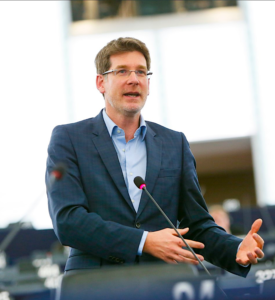
Within the EU, members of the European Parliament are demanding better data on how the available vaccines are being allocated. They want the vaccination schedules for each country to be made public and to be provided on a monthly basis. “Only once we have a clear picture can we build trust, address challenges linked to delays in supply and the speed at which vaccines are being administered and fight back the growing wave of uncertainty and disinformation in Europe,” wrote Pascal Canfin, who chairs the Committee on the Environment, Public Health and Food Safety (ENVI). MEPs pointed out that only a limited number of member states had provided data on their vaccination programmes. Another EU agency, the European Centre for Disease Prevention and Control (ECDC), is also providing on-line data about the roll-out of vaccination programmes. It can be accessed at the COVID-19 Vaccine Tracker section of the ECDC website. “Vaccination campaigns are not to be viewed merely as a race for the largest numbers at the quickest speed,” said ECDC Director Andrea Ammon on the organisation’s website. “As the rollout progresses, vaccination strategies will need to be flexible and adaptable. Our updated report on national deployment plans gives context to the evolution of policies and data available in the Vaccine Tracker.” That, at least, is an attempt to use science to ensure accurate statistics, the right sorts of weapon with which to confront a pandemic. The poor people of Pompei and Herculaneum had no possible defence against the eruption of the volcano, Vesuvius. Clearly, we face an eruption of a very different sort that requires calm consideration and common sense. Today’s conspiracy theorists seem to want us all to shout “boo” and jump into the lava. There’s a simple response: don’t!

